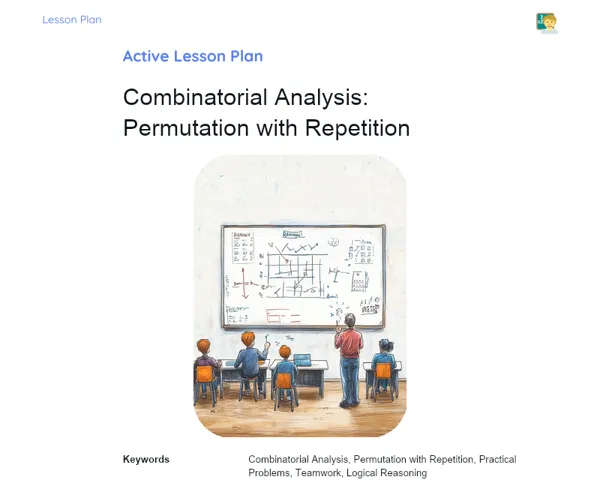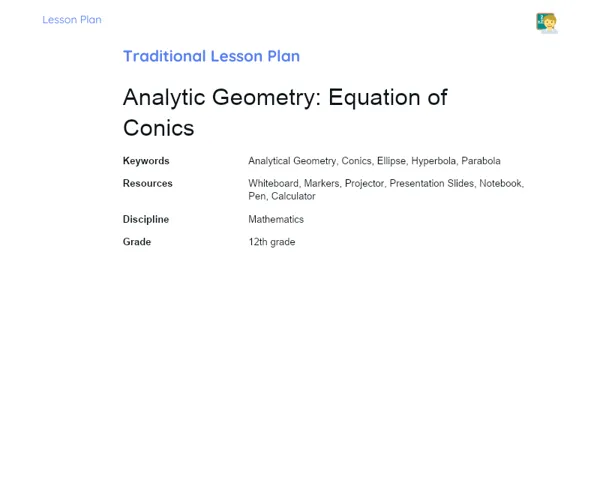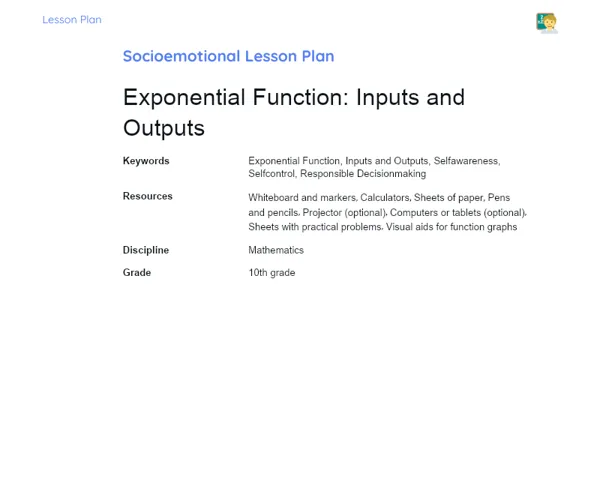Lesson Plan | Lesson Plan Tradisional | Basic Addition Facts
| Keywords | Addition, Basic Facts, Mathematical Operations, Commutative Property, Practical Examples, Student Engagement, Daily Application, Basic Mathematics |
| Resources | Whiteboard, Markers, Real objects (toys, fruits, pencils), Pictures of apples, Counting blocks, Notebook and pencil for note-taking |
Objectives
Duration: (10 - 15 minutes)
The aim of this section is to provide a straightforward overview of the knowledge and skills students will acquire by the end of the lesson. This foundation is vital for them to build essential addition skills, which are crucial for grasping more complex mathematical concepts as they progress.
Objectives Utama:
1. Comprehend that basic addition facts are simple sums that lay the groundwork for all other addition operations.
2. Carry out basic addition operations, like 2+4=6.
Introduction
Duration: (10 - 15 minutes)
This phase's goal is to spark students' interest and connect the topic to their lives, demonstrating the everyday relevance of addition. This not only motivates students but also helps them relate the content to their own experiences, leading to better understanding and engagement.
Did you know?
Did you know addition is a part of almost every job? For instance, a cook needs addition to figure out how many ingredients to use for a dish, while an engineer employs it to measure and erect buildings. This highlights how integrated math is in our lives and underscores the importance of mastering it from a young age!
Contextualization
Begin the lesson by discussing how addition plays a vital role in our everyday lives. Clarify that addition is one of the most basic mathematical operations, handy in various common situations, such as counting toys, fruits, or even while tallying scores in a game. Let students know that mastering the fundamental aspects of addition will set them up for tackling more advanced math topics in the future.
Concepts
Duration: (40 - 50 minutes)
This stage aims to provide a comprehensive and practical understanding of the basic principles of addition. By detailing each relevant topic with clear, relatable examples, students are encouraged to visualize and internalize the addition process. The proposed questions serve to reinforce learning and assess students' understanding.
Relevant Topics
1. Concept of Addition: Explain that addition is the mathematical operation of bringing together two or more numbers to get a total. Use relatable examples, like adding toys or fruits.
2. Addition Symbols: Introduce the symbol '+' for addition and the symbol '=' for the total. Show examples such as 2+3=5.
3. Basic Facts of Addition: Discuss common and simple sums that students should memorize, like 1+1, 2+2, 3+3, etc. Use visual examples and real objects to make these sums clear.
4. Commutative Property of Addition: Clarify that in addition, the sequence of the numbers does not affect the result. For example, 2+3=5 is the same as 3+2=5.
5. Practical Application: Showcase how addition is utilized in daily life, like combining the quantity of pencils from two different pencil boxes or counting total fruits in a basket.
To Reinforce Learning
1. What do you get when you add 2+4?
2. If you have 3 apples and receive 2 more, how many apples do you have in total?
3. What do you get if you add 5 pencils and 3 pencils together? How many pencils do you have altogether?
Feedback
Duration: (20 - 25 minutes)
The goal of this segment is to review and reinforce the concepts introduced, ensuring that students possess a solid grasp of the basic facts of addition. The thorough discussion of posed questions and engagement through reflections help cement their learning, allowing them to apply these concepts in various contexts.
Diskusi Concepts
1. Discussion of the Presented Questions: 2. What is the result of 2+4? 3. Clarify that 2+4 equals 6. Utilize tangible objects like blocks or toys, demonstrating how combining two blocks with four results in a total of six. 4. If you have 3 apples and get 2 more, how many apples do you have now? 5. Illustrate that adding 3 apples to 2 apples totals 5 apples. Use real apples or pictures to demonstrate this addition. 6. What happens if you add 5 pencils and 3 pencils? How many pencils do you have in total? 7. Explain that 5 pencils plus 3 pencils equals 8 pencils. Use actual pencils for visual clarity.
Engaging Students
1. Questions and Reflections to Engage Students: 2. What was the easiest part for you to grasp about addition? Why do you think that is? 3. Can you come up with another instance in your daily life where you use addition? 4. How would you clarify to a friend how to add two numbers? 5. Which example helped you the most in understanding addition? Why was that? 6. Can you draft a story that features the act of adding objects or people?
Conclusion
Duration: (10 - 15 minutes)
In this concluding stage, the intention is to summarize and reinforce the key points discussed during the lesson, solidifying student comprehension. By revisiting the content and underlining the practical significance of addition, this phase ensures that students depart with a clear and actionable understanding of what they learned.
Summary
['Concept of Addition: Addition is about combining two or more numbers to arrive at a total.', "Addition Symbols: The '+' symbol indicates addition, while '=' denotes the result.", 'Basic Facts of Addition: Common sums include 1+1, 2+2, 3+3, etc.', "Commutative Property of Addition: The order of numbers in addition doesn't change the final result.", 'Practical Application: Instances of using addition in everyday life include counting toys, fruits, or pencils.']
Connection
The lesson bridged the gap between theory and practice by using tangible examples and daily occurrences to elucidate the principles of addition. This approach enabled students to perceive how addition is employed in real-life contexts, enhancing relevance and ease of understanding.
Theme Relevance
Grasping the fundamental facts of addition is critical for many day-to-day activities and future mathematical endeavors. Being able to add swiftly and accurately aids in tasks like counting money, splitting food, or following recipes. Addition is interwoven into numerous aspects of our lives and is essential for both academic success and everyday problem-solving.



